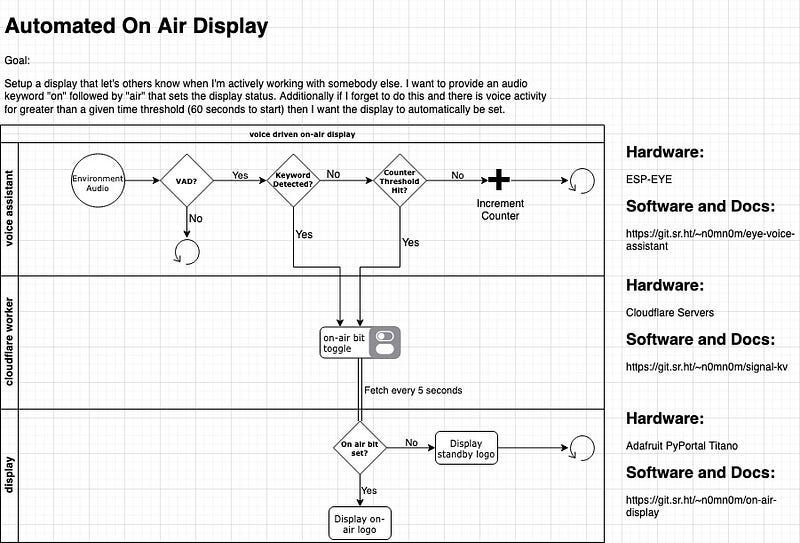Published: Feb 8, 2020 by
Earlier this year Hackaday announced the Train all the Things contest. I immediately knew I wanted to submit something, but figuring out what to build took me a little bit. For my side projects I like to make something that is useful to me, or somebody I know; while also learning something new. A few days after the contest was announced my daughter was in the basement playing outside my office/homelab when I remembered my wife had asked me if there was a way for her to know when I was working with somebody so that they could avoid coming down in the basement. I thought a voice driven display could be a fun solution.
Choosing Tools
After deciding on the project the next thing I wanted to figure out was what new boards I would need (if any) and how I would build my model. After doing some research I landed on Tensorflow as my path forward for deploying a model to a microcontroller. Having used Tensorflow the barrier for model creation is a bit lower, but I am really curious about Tensorflow Lite and the potential it provides. Additionally a relatively new book TinyML looks like a good resource to use along the way.
After settling on TF Lite the next thing was picking a board. Most of my embedded experience has been with CircuitPython and Rust. For this project I thought it would be fun to learn something new. The Espressif ESP-EYE caught my eye as an interesting board known to work with TF Lite. I’ve seen the ESP32 and 8266 in a lot of other projects, so learning the ESP toolchain seems valuable. Additionally a lot of the Espressif ecosystem seems to be built around FreeRTOS which provides a whole other avenue of learning and hacking.
Finally I will need a way to let somebody know when the model has picked up voice activity, to signal that I’m currently busy in the lab. The ESP32 has a WiFi chip providing the ability to send and receive signals via TCP if we want. The ESP-EYE has that built in, and I happend to have a PyPortal (with an ESP32) that could make a great display checking for a status using WiFi too. To signal from one to the other I decided to have some fun and use Cloudflare Workers K/V to set a bit from the ESP-EYE that would be read by the PyPortal at a given time interval to set the display.
Putting it all together the initial idea looks something like this:

Which allows me to have a small board in my homelab listening and the display above the stairwell where somebody can get a status update before they ever come down.
The code, docs, images etc for the project can be found here and I’ll be posting updates as I continue along to HackadayIO and this blog. If you have any questions or ideas reach out.